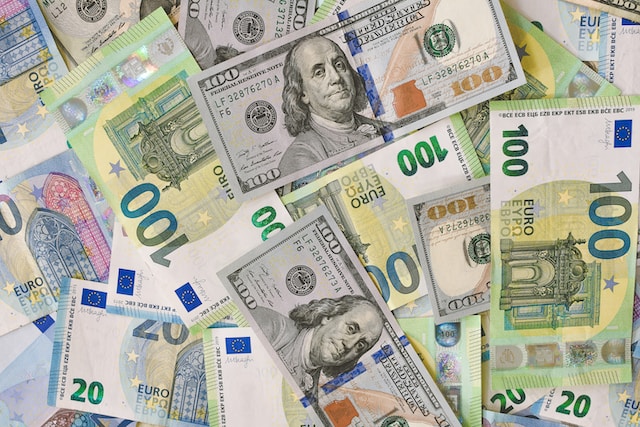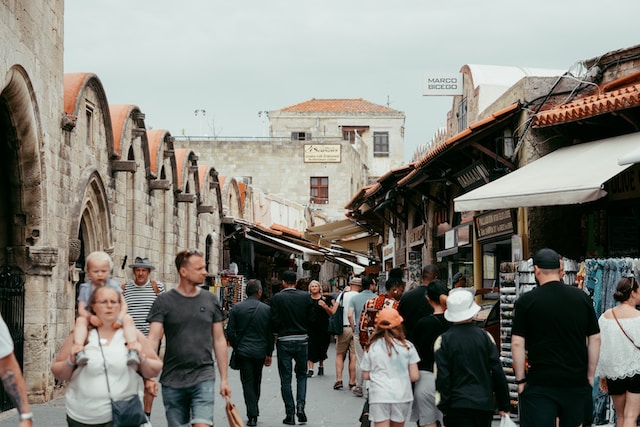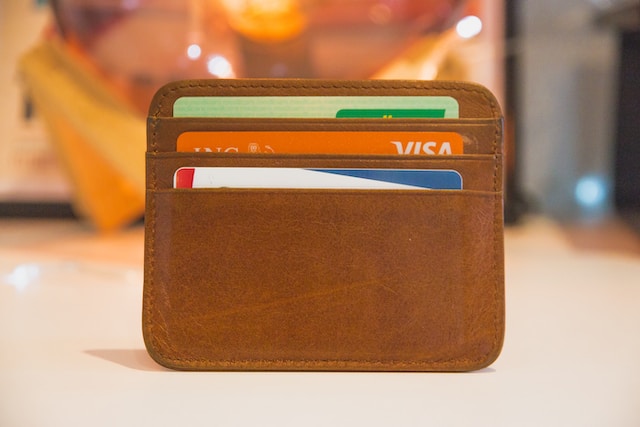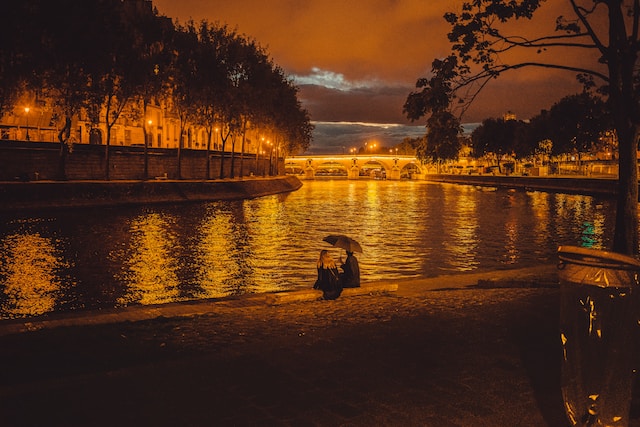How Much Does it Really Cost to Travel Europe for 30 Days?

Have you ever wondered how much it would cost to explore the diverse and vibrant continent of Europe for an entire month?
From strolling along the romantic canals of Venice to admiring the historic landmarks in Paris, there’s no shortage of breathtaking sights and cultures waiting to be discovered.
But before you plan your dream trip, let’s take a closer look at How Much Does it Really Cost to Travel Europe for 30 Days?
In this blog post, we’ll break down all the essential costs from accommodation and transportation to food and activities so that you can make an informed decision about your European adventure without breaking the bank! We’ll also provide some tips and strategies for managing expenses throughout your travels.
By the end of this article, you’ll have a better understanding of how much (or how little!) it really costs to travel through Europe for 30 days.
Setting the context: The allure of traveling Europe for a month
There’s something alluring about the idea of traveling to Europe for a month. It seems like the ultimate way to see the continent – you can take your time, explore different countries, and really immerse yourself in the experience. But how much does it actually cost to travel to Europe for a month?
The short answer is: it depends.
Yes, 😊
There are a lot of variables that go into the cost of traveling to Europe for a month, including your destination, your accommodation, your transportation, and your daily expenses.
To give you a better idea of what you can expect to spend, we’ve put together a sample budget for a month-long trip to Europe. This budget assumes that you’ll be spending time in Western European countries like France, Italy, Spain, and Germany.
9 Things to Consider Before Your Next Summer Adventure
Addressing the question: How much does it truly cost?
The popular notion is that travel is expensive. And while it can be, there are ways to offset the cost and make your trip more affordable.
One way to do this is by choosing your destination wisely. For example, countries in Western Europe tend to be more expensive than those in Eastern Europe. You can also save money by traveling during the off-season or shoulder season when hotel rates and airfare are typically lower.
Well,
Hope, you got some rough knowledge.
Let’s Continue reading!!
When it comes to accommodation, there are a number of options to choose from, depending on your budget.
Hostels are a great option for budget travelers, as they offer dorm-style rooms at a fraction of the price of a hotel room.
If you’re looking for something a bit more private, consider renting an apartment or condo through websites like Airbnb or HomeAway. This can often be cheaper than staying in a hotel, and you’ll have access to cooking facilities so you can save on meals out.
Another way to cut costs while traveling is by planning your sightseeing and activities in advance. Many museums and attractions offer discounted or free admission if you book online ahead of time.
Taking advantage of public transportation instead of taxis or rental cars can also help save money. And if you’re flexible with your travel dates, you can often find better deals on flights and accommodations by being willing to travel on days that are less popular with tourists.
Determining your travel style and preferences
Before you can start estimating your travel costs, you need to first figure out what kind of traveler you are and what your travel preferences are.
Are you the type of person who likes to plan everything out in advance or do you prefer to just wing it?
Do you like to stay in luxury hotels or are you perfectly content with a hostel? Answering these questions will give you a better idea of how much money you’ll need to budget for your trip.
If you’re the type of person who likes to plan everything in advance, then you’ll probably want to book your accommodation and flights well in advance.

This will help ensure that you get the best deals and don’t end up spending more than you need to. However, if you’re the type of traveler who prefers spontaneity, then booking last minute might actually save you some money. You’ll just need to be flexible with your dates and destination.
When it comes to accommodation, there’s a wide range of options available – from camping and hostels all the way up to luxury hotels.
Obviously, where you choose to stay will have a big impact on your overall travel costs. If saving money is a priority, then hostels and camping would be your best bet. However, if comfort is more important to you, then splurging on a nice hotel might make sense.
Ultimately, the best way to keep your travel costs down is by being mindful of your spending.
Setting a realistic budget for accommodations, transportation, food, and activities
Assuming you’ll be spending $100 per day in Europe, here’s a breakdown of how far that money can go in different categories.
Accommodations: Hostels are abundant and cheap, with prices ranging from $20-$40 per night for a bed in a dorm room. If you’re traveling solo, you can find private rooms for as little as $50 per night. Couchsurfing is also an option to save on accommodation costs.

Transportation: Inter-city travel is best done by bus or train, both of which are relatively affordable compared to flying.
A one-way ticket from Paris to Amsterdam on a budget airline might cost around $60, while the same journey by bus will only set you back about $30. When it comes to getting around cities, make use of public transportation or rent a bicycle – it’s an ideal way to see the sights while getting some exercise!
Food: Eating out every meal can quickly add up, but there are plenty of ways to keep food costs down. Taking advantage of breakfast buffets at your accommodation, cooking your own meals occasionally, and snacking on local produce are all good strategies.

Street food is also generally very cheap –kebabs and falafel are especially popular options. And of course, no trip to Europe would be complete without indulging in some delicious pastries!
Activities: Of course, there are endless possibilities for things to do while you’re in Europe –
Highlighting free or low-cost attractions and activities
Assuming you’re traveling on a budget, there are plenty of free or low-cost attractions and activities to enjoy in Europe.
For starters, many of the continent’s top museums offer free admission on certain days or for students – so doing your research in advance can help you save some money. Additionally, most cities have free walking tours that are a great introduction to learning about the history and culture of a new place.
Of course, outdoor activities are always a great (and free!) way to explore Europe. Hiking and biking are popular options – and there are often trails that lead right into town so you can explore without spending any money on transportation.
In the summertime, swimming in lakes or rivers is another great way to take advantage of the warm weather – and it’s usually free as well!

Factoring in visa fees, travel insurance, and currency exchange rates
When you’re budgeting for your trip to Europe, don’t forget to factor in the costs of your visa, travel insurance, and currency exchange rates.
Your visa fees will vary depending on your country of origin and the length of your stay, but they’re typically around $60 for a tourist visa (good for 90 days).

Travel insurance is also important to consider, especially if you’re planning on doing any adventurous activities while you’re abroad. A good policy will cover you in case of medical emergencies, lost luggage, or trip cancellation.
Currency exchange rates can also fluctuate, so it’s a good idea to check the rate before you exchange any money.
Budgeting for unexpected expenses and contingencies
No matter how much you plan and save, there’s always the potential for unexpected expenses when traveling. Whether it’s an unplanned activity or an emergency situation, it’s important to have a budget for these contingencies.
One way to do this is to create a travel fund specifically for these kinds of expenses. When you’re planning your trip, set aside a certain amount of money that you can use for unexpected costs. This way, if something comes up, you’ll have the funds available to cover it.

Another option is to purchase travel insurance. This can give you financial protection in case of an emergency or other unforeseen circumstances. Be sure to read the policy carefully so that you understand what is and isn’t covered.
Don’t forget to account for things like currency exchange rates and ATM fees when budgeting for your trip. These can add up quickly if you’re not careful, so be sure to factor them into your overall cost estimate.
By keeping these things in mind, you can help ensure that your trip stays on budget despite any surprises along the way.
Providing insights into cost variations based on location and travel choices
The cost of travel varies depending on many factors, including location and travel choices. Here are some tips to help you plan your European vacation on a budget:
Choose your destination wisely: Some destinations are more expensive than others. If you’re on a tight budget, consider visiting Eastern Europe or Spain instead of more expensive countries like Switzerland or Norway.
Be flexible with your travel dates: Airfare and accommodations tend to be more expensive during peak travel periods. If possible, try to travel outside of the high season. For example, you’ll save money by visiting Europe in the spring or fall instead of summer.
Consider all modes of transportation: Flying is usually the most expensive way to travel, but it’s not always the best option. Train travel is often cheaper and can be more scenic (especially in Europe), but it may take longer. If you’re really looking to save money, consider taking buses or even hitchhiking.
Think about your accommodation options: You don’t have to stay in a fancy hotel to have a good time. There are plenty of affordable accommodation options available, such as hostels, camping, and Couchsurfing. Be creative and research all of your options before booking anything.
Don’t forget about food: One of the best parts about traveling is trying new food! However, eating out every meal can quickly add up. To save money, cook some meals at your accommodation or look for cheap eats around town. Street food is
Exploring how cultural events and seasonal factors can impact costs
There is no definitive answer to this question. Depending on your destination(s) of choice, the time of year you visit, and your personal travel style, the cost of a trip to Europe can vary greatly. However, there are some general factors that will affect the cost of any European vacation.

Cultural events such as festivals or holidays can impact travel costs. If you’re visiting Europe during a major event like Oktoberfest in Munich or Carnivale in Venice, be prepared for higher prices on hotels, dining, and attractions.
However, these events can also be a great way to experience local culture and save money by taking advantage of free public celebrations.
Seasonal factors also come into play when budgeting for a trip to Europe. Summer is the peak season for tourism, so expect airfare and accommodation rates to be at their highest during this time.
If you’re flexible with your travel dates, consider traveling during the shoulder season (April-May or September-October) when crowds are smaller and prices are more reasonable.
Winter can also be a great time to visit Europe if you’re looking for discounts on travel and accommodations
Highlighting opportunities to experience local festivals or off-peak travel benefits

If you’re looking to experience some of Europe’s best festivals without breaking the bank, there are a few things you can do to save. For starters, take advantage of off-peak travel benefits by traveling during the shoulder season. Not only will flights and accommodation be cheaper, but you’ll also avoid the crowds.
Local festivals are another great way to experience European culture without spending a fortune. From food and wine festivals to music and art festivals, there’s something for everyone. And if you time it right, you can even catch some of the biggest festivals in Europe without spending a dime.
So, what are you waiting for? Start planning your next European adventure today!
Tips for budget-friendly souvenir shopping
Souvenir shopping can be a great way to commemorate your travels, but it can also be a major drain on your travel budget. If you’re looking for ways to save money on souvenirs, here are a few tips to keep in mind:

– Shop at local markets instead of tourist traps: You’ll find better prices and more unique items at local markets.
-Look for handmade souvenirs: Handmade souvenirs are often more meaningful and less expensive than mass-produced items.
-Bargain: Don’t be afraid to bargain with vendors for a better price.
-Avoid overpriced souvenir shops: Many souvenir shops cater to tourists and charge high prices for their items. If you want to save money, avoid these shops altogether.
-Wait until the end of your trip to buy souvenirs: Prices tend to be lower when vendors are trying to get rid of their remaining stock before closing up shop.
Exploring options like travel-friendly debit cards or currency exchange strategies
Assuming you have your flights and lodging booked, your next step is to determine how you will pay for expenses while abroad. Many find that using a travel-friendly debit card is the best option as it eliminates the need to carry large amounts of cash. When selecting a debit card, be sure to choose one that has low foreign transaction fees as well as ATM withdrawal fees.

Another option for paying for expenses while traveling is to use a currency exchange strategy. This can be beneficial if you are planning on spending a significant amount of time in one country or if you are traveling to multiple countries with different currencies.
When using a currency exchange strategy, be sure to research the current exchange rates so that you get the most bang for your buck.
Conclusion
Traveling around Europe for 30 days is an incredibly rewarding experience. With proper planning and budgeting, you can enjoy all the highlights it has to offer without breaking the bank.
In general, travelers should expect to spend between $3,000–$4,000 per person on their journey. However, this amount may be quite different depending on your chosen destinations and activities while in Europe.
Ultimately, planning ahead of time and being mindful of spending will help you stay within a manageable budget for your travels throughout Europe!






